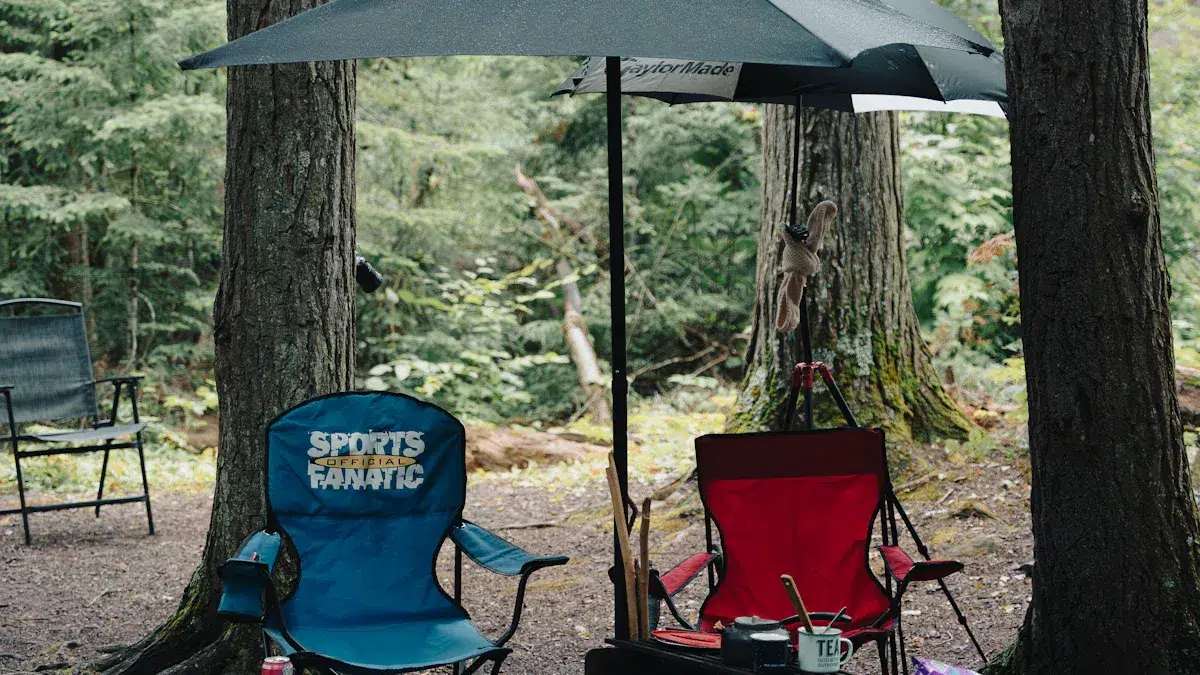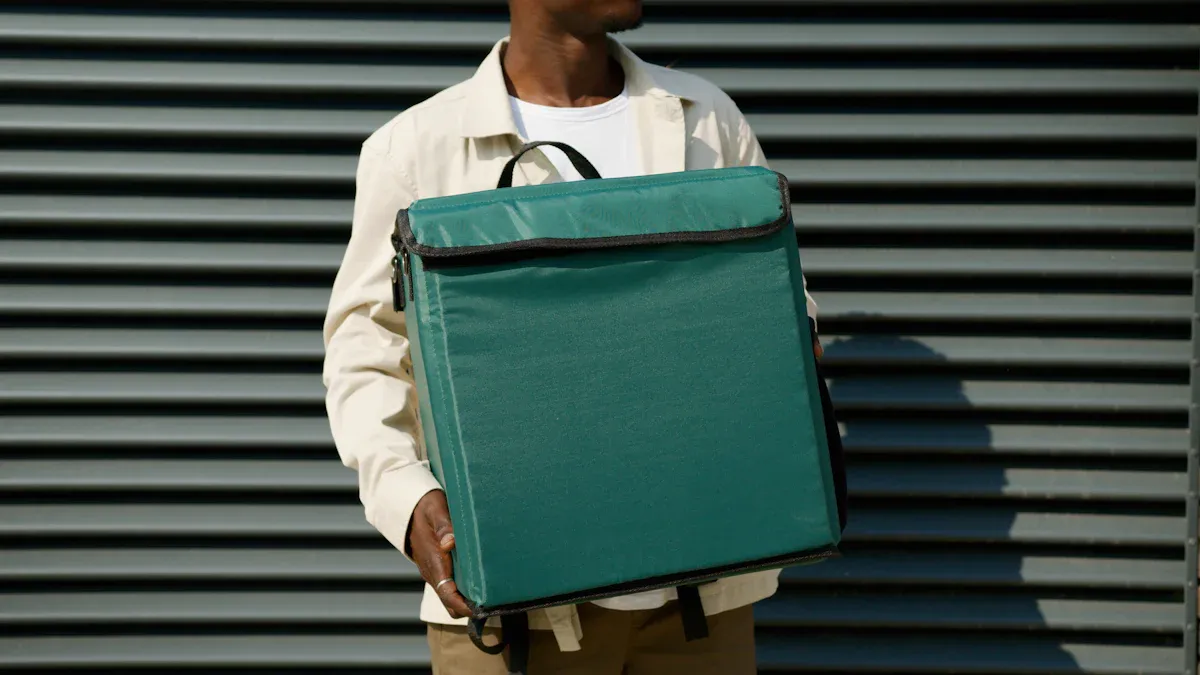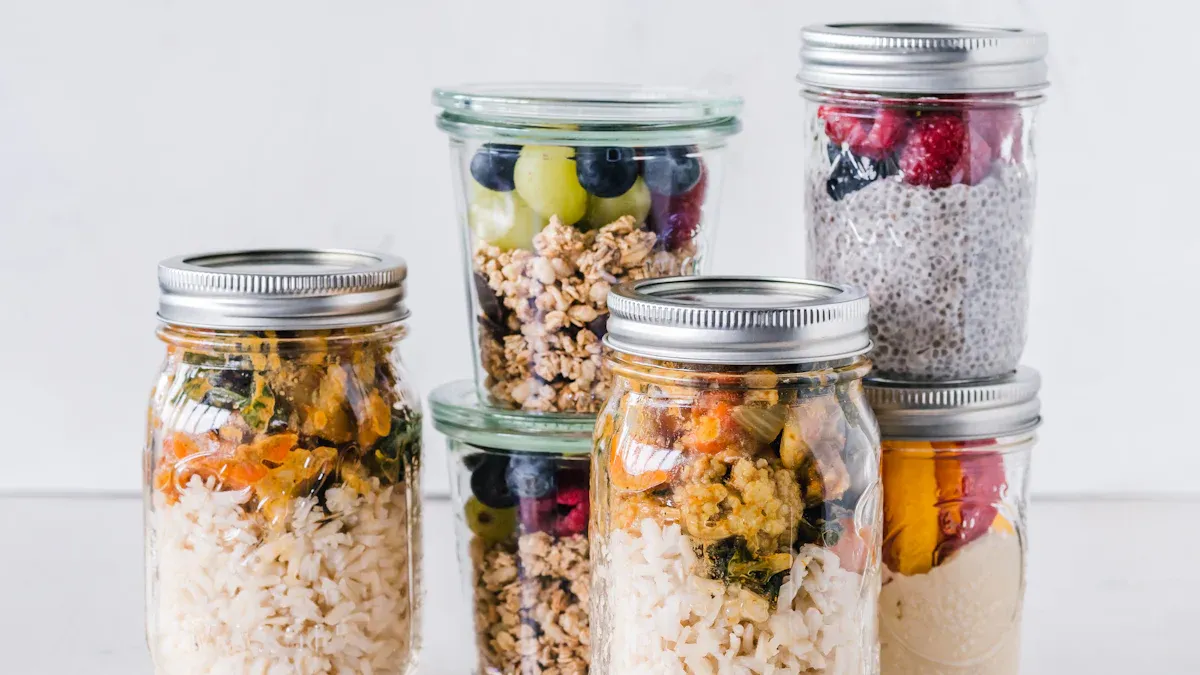
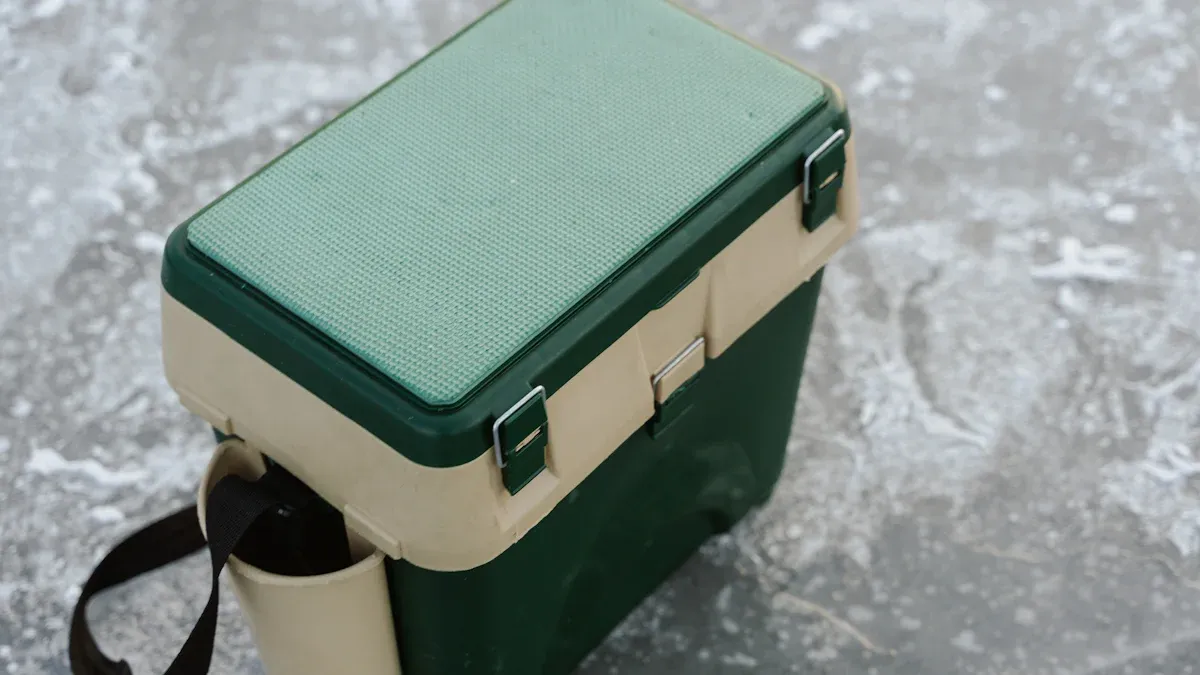
When you shop for hard shell lunch coolers, you want to focus on insulation, durability, size, portability, cleaning, food safety, and organization. The right hard shell lunch cooler should fit your lifestyle, whether you pack an insulated lunch box for work, send your kids to school, or plan outdoor adventures. Needs can look different depending on your routine:
| Use Case | Key Needs and Features |
|---|---|
| Work & School | Durable, compact, organized, lightweight, easy to clean, moderate insulation |
| Outdoor | Large capacity, top insulation, rugged exterior, leakproof, secure locks, extra accessories |
KUER’s strong background in manufacturing and innovation means you can trust their hard shell lunch coolers to meet these needs with ease.
Insulation
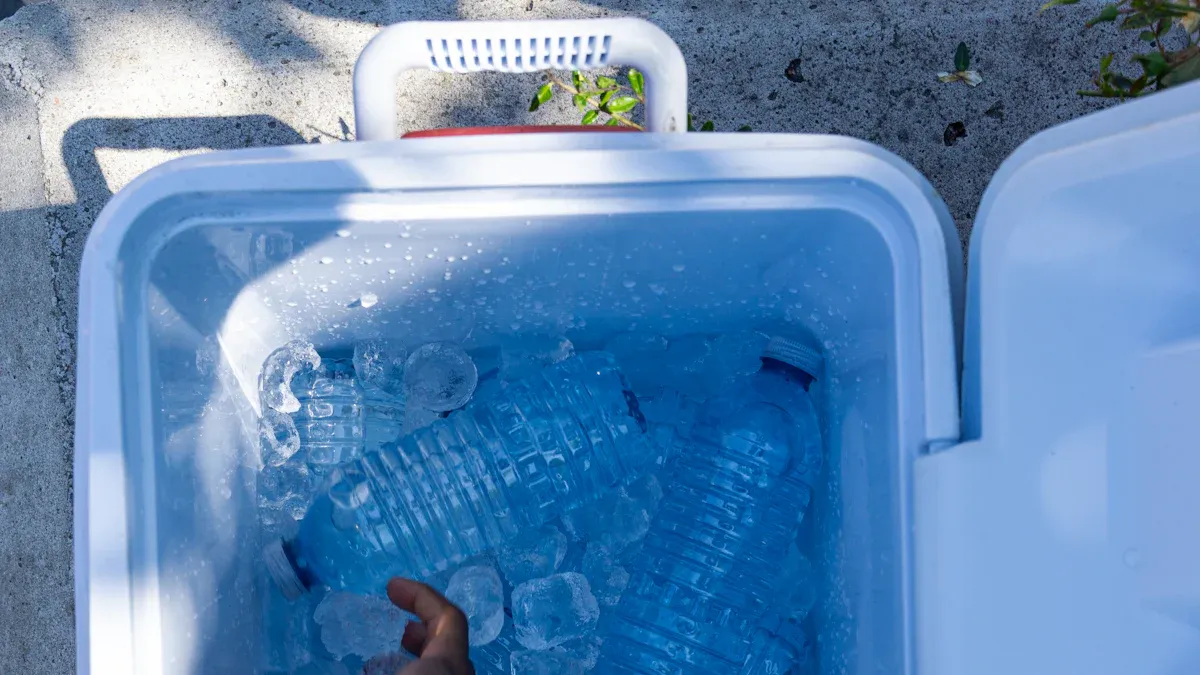
When you pick out a hard shell lunch cooler, insulation is the real game-changer. You want your food and drinks to stay cold and fresh, whether you’re at work, school, or out on an adventure. Let’s break down what makes insulation so important.
Cold Retention
Cold retention tells you how long your hard shell lunch cooler can keep things cold. If you use an insulated lunch box with strong insulation, you can expect your food to stay cool for hours. But not all coolers perform the same. Here’s a quick look at how different models stack up after 8 hours:
| Lunch Cooler Model | Approximate Ice Retention After 8 Hours |
|---|---|
| Top-performing models (e.g., Sunnybird Insulated Rolltop) | Retain about 46% solid ice (54% ice loss) |
| Yeti Daytrip Packable Lunch Bag | Retains about 41% solid ice (59% ice loss) |
| Other common models (e.g., Carhartt, Igloo, Coleman) | Ice loss ranges from 66% to 81% |
| Several soft-sided or less insulated models | Nearly 100% ice loss |
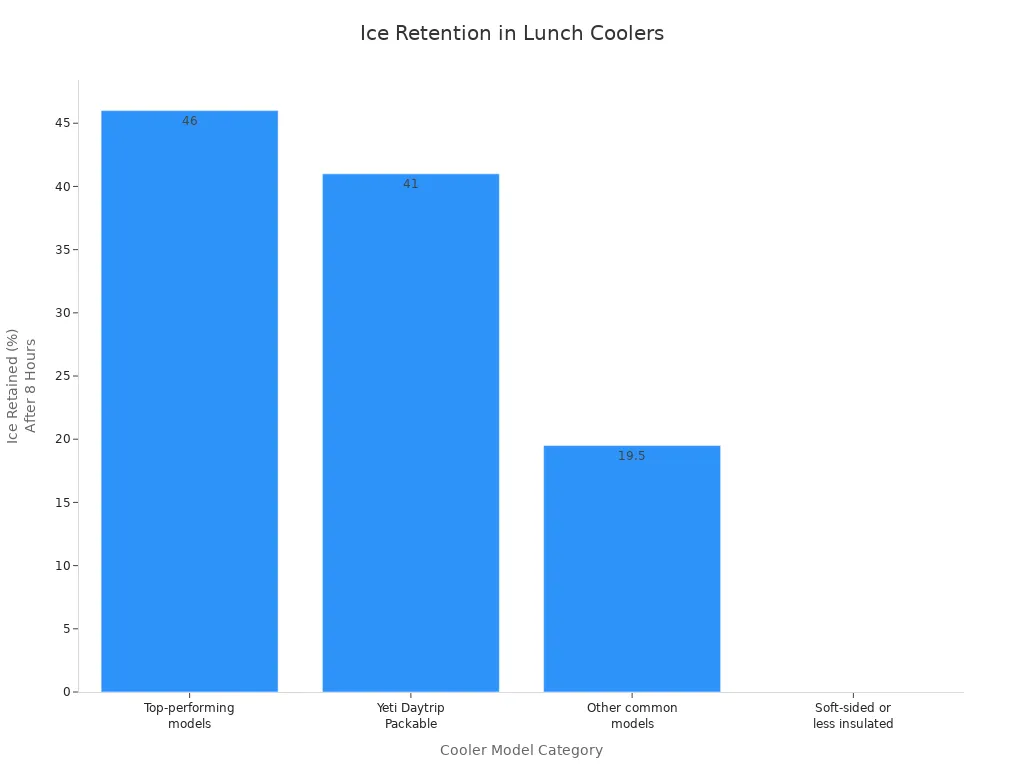
You’ll notice that the best hard shell lunch cooler models keep almost half their ice after a full workday. That’s a solid benchmark for cold retention. If you want your insulated lunch box to perform at its best, try these tips:
- Pre-chill your cooler before packing.
- Use block ice or frozen ice packs.
- Keep the lid closed as much as possible.
- Store your cooler in the shade.
With strong insulation, you get better cold retention, which means your lunch stays safe and tasty.
Temperature Control
Temperature control is all about keeping your food at a safe, cool temperature. A hard shell lunch cooler with strong insulation can help you do just that. Here’s what you can expect from a top insulated lunch box:
- Food stays below 40°F (4.4°C) for 6 to 8 hours.
- Chilled temperatures under 50°F (10°C) can last up to 12 hours.
- Ice packs often stay cold or partly frozen for 9 to 10 hours, even on warm days.
- Results depend on how much you open the cooler, the outside temperature, and how much food you pack.
- For best results, pre-chill your insulated lunch box and use frozen packs.
If you want your lunch to stay cold all day, focus on cold retention and temperature control. A hard shell lunch cooler with strong insulation will make a big difference.
Durability
When you pick out a hard shell lunch cooler, you want it to last. Durability means your cooler can handle bumps, drops, and daily use without falling apart. Let’s look at what makes a cooler tough and reliable.
Materials
The best hard shell lunch coolers use strong plastics. Rotomolded coolers are made from one solid piece of UV-resistant polyethylene. This design gives you thick, seamless walls that don’t crack or split easily. You get a cooler that stands up to rough treatment and lasts for years. Injection-molded coolers use two parts fused together. They are lighter but have seams that can become weak spots over time. Soft coolers use flexible foam, but they don’t last as long or keep things as cold. If you want a hard shell lunch cooler that can handle anything, look for rotomolded construction and durable materials.
Build Quality
You can spot a well-built hard shell lunch cooler by checking a few things. First, see if the hinges and latches feel sturdy. Good coolers have strong, leakproof seals and reinforced corners. Some brands test their coolers by packing them with ice and using temperature loggers to see how long food stays cold. They also open and close the cooler many times to make sure the parts hold up. Other tests include filling the cooler with water to check for leaks, weighing it to see if it’s easy to carry, and making sure it fits in your car. These steps show you how a hard-sided cooler performs in real life.
Tip: Always check for impact resistance and leakproofing. These features help your cooler survive drops and spills.
KUER Features
KUER’s hard shell lunch coolers stand out because of their advanced manufacturing. The company uses rotomolded and blow-molded plastics to create thick, even walls. This makes the coolers tough and impact-resistant. KUER adds reinforced seams, heavy-duty zippers, and leak-proof designs. You’ll find materials like heavy rubber, treated nylon, and reinforced plastic for extra strength. With over 50 patents, KUER focuses on innovation and long-lasting durability. Their coolers can handle drops, rough handling, and tough outdoor conditions. You get a hard shell lunch cooler that’s ready for anything.
Size & Capacity
Choosing the right size for your hard shell lunch cooler can make your day much easier. You want a cooler that fits your food, drinks, and snacks without being too bulky or too small. Let’s look at how cooler sizes and cooler capacity can match your needs.
Personal vs. Large
You have many cooler sizes to pick from, but two categories stand out. Most people choose either a small cooler for personal use or a larger one for group outings. The most popular cooler sizes are “Up to 25 Quart” and “26-75 Quart.” If you need a hard shell lunch cooler for work, school, or a short trip, the “Up to 25 Quart” size works best. Over 60% of commuters and outdoor fans pick this size because it is easy to carry and fits just enough for one person. You can pack a sandwich, a drink, and a snack with room to spare.
If you plan a picnic, camping trip, or team event, you might need more space. The “26-75 Quart” cooler capacity is perfect for families, sports teams, or anyone who needs to keep food cold for several days. More than half of event organizers and food service workers use these larger cooler sizes for their ability to hold more and keep things cold longer. You get extra room for drinks, meals, and even ice packs.
Tip: Think about how much you usually pack. A bigger cooler capacity is great for groups, but a smaller size is easier to carry every day.
Internal Layout
Cooler sizes are not just about outside measurements. The inside layout matters, too. Some hard shell lunch coolers have one big open space. Others come with dividers, trays, or baskets to help you organize your food. If you like to keep your sandwich away from your fruit, look for a cooler with built-in sections. Some cooler sizes offer removable trays, so you can adjust the space as you need. This helps you use every inch of cooler capacity and keeps your lunch neat.
A table can help you compare:
| Cooler Size | Best For | Typical Features |
|---|---|---|
| Up to 25 Quart | Personal, day trips | Compact, easy to carry, simple layout |
| 26-75 Quart | Groups, long outings | More space, dividers, trays, extra storage |
When you pick a hard shell lunch cooler, check both the cooler sizes and the inside layout. You want a cooler capacity that fits your routine and keeps your food organized.
Portability
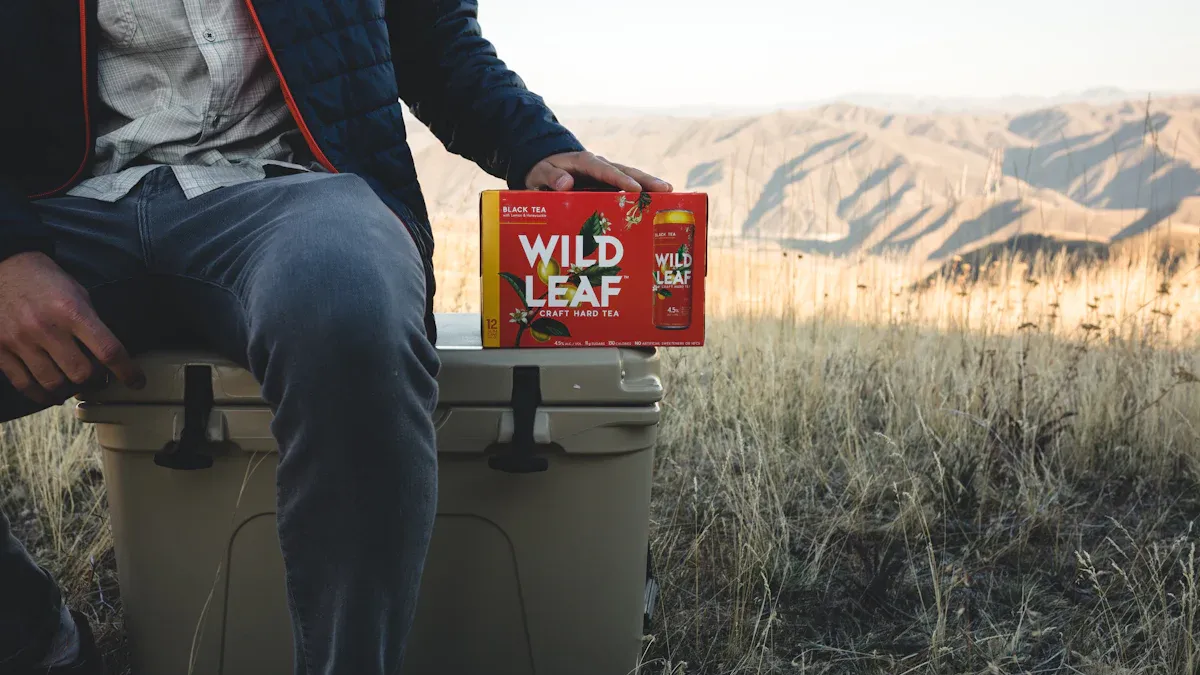
When you pick a hard shell lunch cooler, you want it to be easy to carry. Portability matters, especially if you walk to work, ride a bike, or take your lunch on a hike. Let’s look at what makes a cooler comfortable to move around.
Handles & Straps
The right handles and straps can make a big difference. You want to carry your lunch without hurting your hands or shoulders. Here are some features that help:
- Molded handles fit your hand and give you a strong grip. You won’t feel pain even if you carry your cooler for a long time.
- Rope handles with rubber grips feel soft and sturdy. They help you hold the cooler without slipping.
- Shoulder straps or backpack straps spread the weight across your shoulders. You can keep your hands free for other things.
- Some coolers have wheels and telescoping handles. You can roll your hard shell lunch cooler over rough ground instead of lifting it.
- Reinforced handles and double stitching keep the handles strong. You can carry heavy loads without worry.
Tip: Try out the handles and straps before you buy. Make sure they feel comfortable and secure.
Weight
Weight is another key part of portability. You want a cooler that is light enough to carry but still strong. Most hard shell lunch coolers for daily use weigh between 1.5 and 4.4 pounds. Here’s a quick look at some popular models:
| Product Name | Material | Weight | Notes |
|---|---|---|---|
| Stanley Classic Metal Lunch Box | Stainless steel | 4.4 lbs | Hard shell, metal, daily use |
| Igloo Retro Playmate Mini | Plastic with foam insulation | 1.5 lbs | Hard plastic hard shell, daily use |
| Coleman Chiller | Recycled polyester (soft-sided) | 1.6 lbs | Insulated but not fully hard shell |
| Hydro Flask Insulated Lunch Bag | Polyester (soft-sided) | 11 oz | Insulated, softer sides, not hard shell |
A lighter hard shell lunch cooler is easier to carry every day. If you pack a lot of food or drinks, check the weight before you buy. You want a cooler that fits your needs and feels good to carry.
Cleaning
Easy Maintenance
Keeping your hard shell lunch cooler clean is simple if you follow a few easy steps. You want your food to stay fresh, so regular cleaning matters. Most manufacturers suggest these methods:
- Wash the inside and outside with mild soap and warm water before you use it for the first time.
- For tough stains, mix baking soda with water and scrub gently.
- If you notice odors, wipe the inside with a diluted chlorine bleach solution. A 6:1 ratio of water to bleach works well.
- Never put your cooler in the dishwasher or use boiling water. Always hand wash.
- After cleaning, leave the lid open and let the cooler air dry. This helps prevent mold and mildew.
- For extra freshness, wipe the interior with a cloth soaked in vanilla extract and leave it inside overnight.
- Lemon juice or rubbing a lemon half on the inside can help remove stubborn smells.
- Clean or replace the rubber gasket if you notice lingering odors.
Tip: Avoid placing your cooler on hot surfaces or dragging it on the ground. This keeps it looking new and working well.
Stain & Odor Resistance
You want a lunch cooler that stays fresh and clean, even after many uses. Some brands, like the Titan lunch boxes by Arctic Zone, use an interior lining treated with Microban®. This antimicrobial agent stops bacteria from growing, which means fewer odors and stains. The special lining makes it much easier to wipe away messes and keeps your cooler smelling fresh. While not every hard shell lunch cooler uses this technology, it shows how advanced materials can make cleaning and maintenance much easier for you.
Food Safety
Safe Materials
You want your lunch to stay fresh and safe. That starts with the materials inside your lunch cooler. When you choose a hard shell lunch cooler, always check if the materials are food grade and non-toxic. Many top brands use plastics like HDPE for the outer shell and special gels inside ice packs. These materials do not leak chemicals into your food.
Look for these important certifications:
- FDA approval for food contact safety
- SGS and MSDS certifications for chemical safety
- CPSIA compliance for child safety
- BPA-free labeling
These certifications mean the cooler’s materials meet strict rules for food safety. You can pack sandwiches, fruit, or snacks without worry. The materials are safe for you and your family.
Tip: Always check the label or product details for these certifications. If you see them, you know your cooler is safe for food storage.
Secure Seals
A good seal keeps your food safe and fresh. You want a lunch cooler that closes tightly every time. Secure seals stop leaks and keep outside air from getting in. This helps your food stay cold and stops germs from sneaking inside.
Many coolers use thick rubber gaskets around the lid. Some even have double-locking latches. These features keep the lid shut tight, even if you drop the cooler or carry it on a bumpy ride. You get peace of mind knowing your lunch stays safe until you open it.
A tight seal also keeps smells from escaping. Your backpack or car will stay fresh, too!
Organization
When you open your lunch cooler, you want to see everything in its place. Good organization makes your day easier. You can grab your food fast and keep things neat. Let’s look at how compartments and extra pockets help you stay organized.
Compartments
Compartments give you a way to separate your food. You can keep your sandwich away from your fruit. Drinks stay upright and snacks do not get crushed. Many hard shell lunch coolers come with built-in dividers or removable trays. Some models have adjustable sections. You can move them around to fit your lunch for the day.
Here’s what you get with well-designed compartments:
- No more soggy sandwiches: Keep cold packs away from bread.
- Easy access: Find your snacks without digging.
- Better food safety: Raw and cooked foods stay apart.
Tip: If you pack different meals, look for a cooler with at least two compartments. You will save time and keep your food fresh.
Extra Pockets
Extra pockets give you space for more than just food. You can store napkins, utensils, or even a small ice pack. Some coolers have mesh pockets inside the lid. Others offer zippered pockets on the outside. These pockets help you keep small items handy and separate from your main meal.
Check out this table for common pocket features:
| Pocket Type | Best For | Example Items |
|---|---|---|
| Mesh Pocket | Quick access | Napkins, wipes |
| Zippered Pocket | Secure storage | Keys, phone, utensils |
| Lid Pocket | Flat items | Ice packs, notes |
A hard shell lunch cooler with extra pockets means you never lose track of your stuff. You can pack everything you need for the day and keep it organized.
Choosing Hard Shell Lunch Coolers
Matching Needs
Picking the best lunch cooler starts with knowing your daily routine. Do you need something for work, school, or outdoor trips? Each lifestyle calls for different features. You want a cooler that fits your needs, not just any cooler on the shelf. Check out this table to see how you can match cooler sizes and features to your life:
| Lifestyle Need | Recommended Cooler Features | Explanation |
|---|---|---|
| Daily Use | Compact size, lightweight, easy-to-carry handle | Fits in bags or cars, easy for everyday transport |
| Outdoor Adventures | Thick insulation, tough hard shell, durable materials | Keeps food cold longer, stands up to rough conditions |
| Group Outings | Large capacity, extra compartments | Holds more food and drinks, keeps things organized |
| Portability Needs | Shoulder straps, backpack-style straps, ergonomic handles | Makes carrying easier and more comfortable |
| Rugged/Extended Use | Reinforced plastic, rotomolded or blow-molded construction | Handles tough outdoor or job site use |
| Ice Retention | Thick foam insulation, airtight seals | Keeps food cold for days, great for long trips |
| Leak-Proof Design | Tight gasket seals, sturdy lids | Prevents spills, keeps your stuff dry |
| Security | Strong latches, locking holes | Protects contents, keeps cooler sealed |
| Organization | Removable trays, dry compartments | Separates food, keeps lunch neat |
You can see that the best coolers for daily use look different from the best lunch cooler for camping or group events. Always think about how much you pack, how far you carry your lunch, and what kind of weather you face.
KUER Advantages
When you want the best lunch cooler, KUER stands out. KUER uses advanced rotomolding to make hard shell lunch coolers with thick, seamless walls. This means you get cooler models that last longer and keep food cold for up to 7 days. KUER’s coolers use food-grade LLDPE and high-quality foam, so your lunch stays safe and fresh. The company holds over 50 patents and keeps improving with new designs and features.
You will find cooler sizes for every need, from small lunch boxes to extra-large coolers for big trips. KUER’s coolers offer strong impact resistance, UV protection, and even custom options for color or branding. You get extras like sturdy handles, wheels, cup holders, and lockable lids. KUER’s focus on research and development means you always get the best coolers for your money.
Tip: Choose a KUER cooler if you want a smart investment that lasts through every adventure and keeps your food cold, no matter where you go.
Tips
Packing
Packing your hard shell lunch cooler the right way helps you fit more food and keeps everything cold longer. Here are some smart strategies you can use:
- Take food out of bulky packaging and pre-portion it at home. This saves space and makes packing easier.
- Freeze anything you can, like drinks or yogurt tubes, before you pack. Start with the coldest items possible.
- Place block ice or frozen water bottles at the bottom. These keep your cooler cold for hours.
- Layer your food in reverse order. Put what you’ll eat last at the bottom and snacks or drinks you want first on top.
- Use stackable containers or square tubs. These fit better than round ones and help you organize your lunch.
- Fill empty spaces with loose ice cubes, cold cans, or even towels. This keeps cold air inside and slows down melting.
- Protect delicate foods by placing them on top or in small bins.
- Cover the top layer with an ice sheet or reusable ice packs to seal in the cold.
- For big coolers, make a simple “cooler map” so you know where everything is. This helps you grab what you need fast and keeps the lid closed.
Tip: Transfer liquids into sturdy, screw-top bottles to prevent leaks and save space. You can even freeze milk or juice in plastic bottles for extra chill.
Maintenance
Taking care of your hard shell lunch cooler keeps it fresh and ready for every adventure. Follow these steps to make your cooler last:
- Wash your cooler after each use with mild soap and water. Pay close attention to corners and seams where crumbs can hide.
- Dry the cooler completely before you put it away. Leave the lid open or turn it upside down to let air flow inside.
- Store your cooler in a cool, dry place. Avoid damp spots like basements, which can cause mold.
- Don’t stack heavy things on top or crush your cooler. This helps it keep its shape and insulation power.
- Leave the lid slightly open during storage or toss in a desiccant packet (like silica gel) to stop odors and moisture.
- Check your cooler often for scratches, leaks, or bad smells. Fix small problems right away so they don’t get worse.
- Use baking soda or charcoal bags inside to soak up any leftover smells.
- Keep your cooler in a labeled bin or bag to protect it from dust and pests.
Regular cleaning and smart storage mean your hard shell lunch cooler will stay tough, clean, and ready for your next meal—no matter where you go!
When you shop for hard shell lunch coolers, focus on what matters most—insulation, durability, size, portability, cleaning, food safety, and organization. Pick the best lunch cooler that matches your daily routine. Choosing a trusted brand like KUER means you get a cooler with a strong shell, reliable insulation, and easy-to-clean features. Their experience in outdoor gear design helps your cooler last longer and keep food fresh. Use these tips, and you’ll find the best lunch cooler for every adventure. 😊
FAQ
How long can a hard shell lunch cooler keep food cold?
Most hard shell lunch coolers keep food cold for 6 to 12 hours. If you use extra ice packs and pre-chill your cooler, you can stretch that time. Some high-quality models, like KUER, can keep food cold for up to 24 hours.
Can I put my hard shell lunch cooler in the dishwasher?
No, you should not put your hard shell lunch cooler in the dishwasher. Hand wash it with mild soap and warm water. This keeps the seals and insulation working well. Let it air dry with the lid open for best results.
What size lunch cooler should I get for work or school?
For daily use, most people pick a cooler with a capacity of 5 to 10 quarts. This size fits a sandwich, snacks, and a drink. If you pack more food or share with others, try a 15-quart cooler.
Are hard shell lunch coolers safe for kids?
Yes! Most hard shell lunch coolers use food-grade, BPA-free plastics. Always check for safety labels like FDA or CPSIA approval. These coolers protect food and keep it fresh, making them a smart choice for kids’ lunches.
How do I stop my cooler from smelling bad?
Wipe the inside with a mix of baking soda and water. Let it air out with the lid open. For tough odors, use a little lemon juice or a cloth with vanilla extract. Regular cleaning keeps your cooler smelling fresh.

